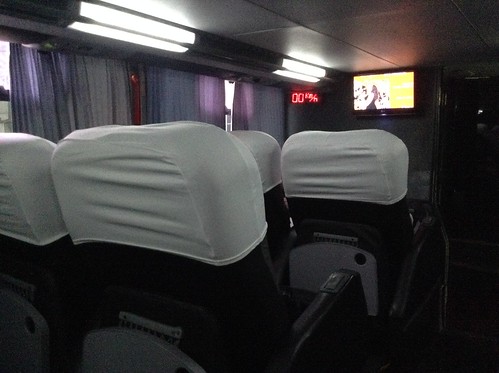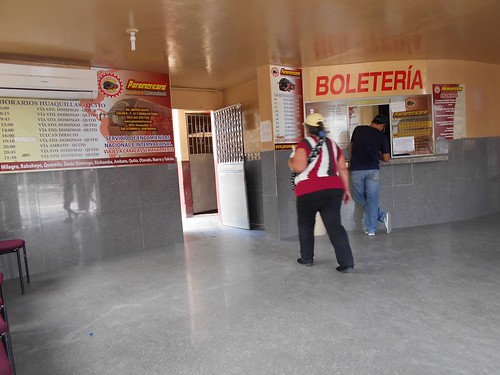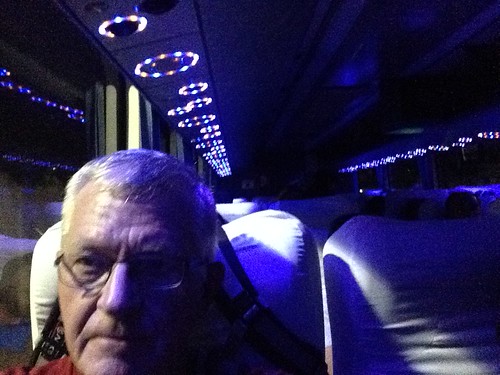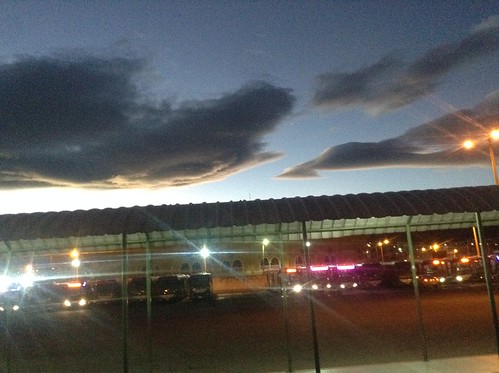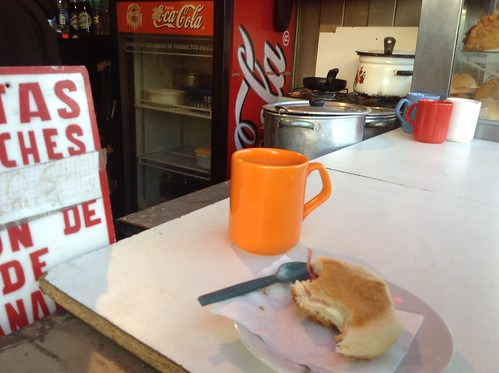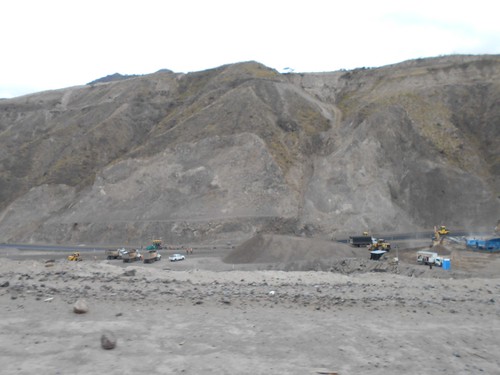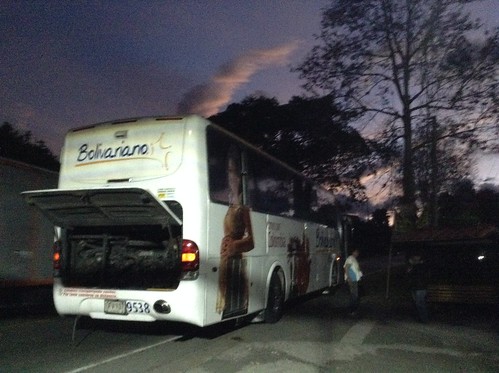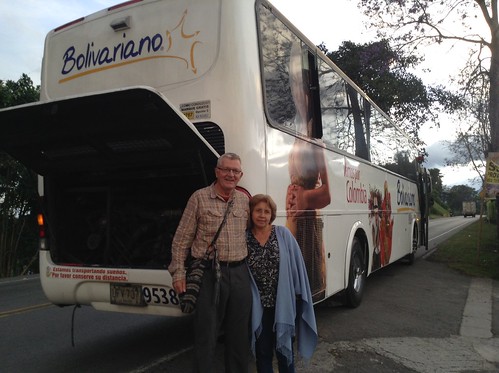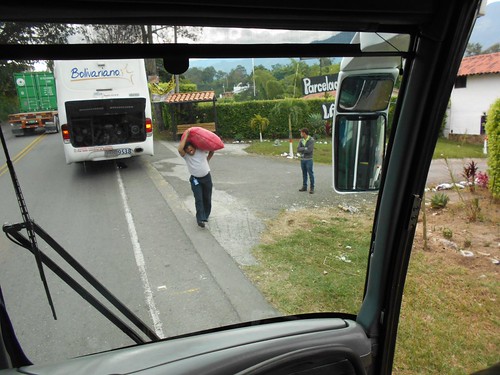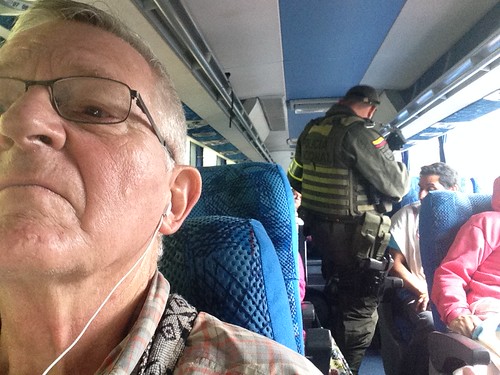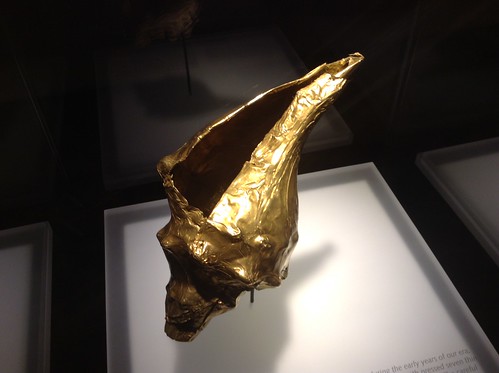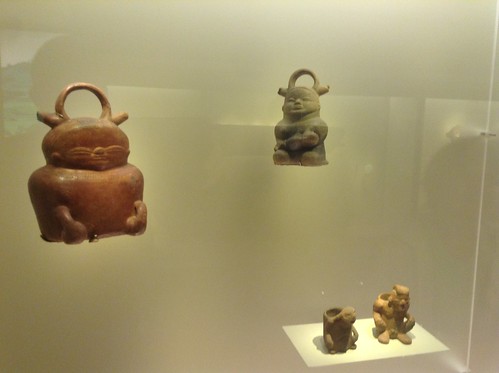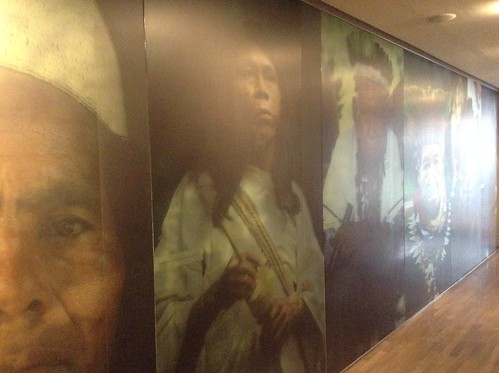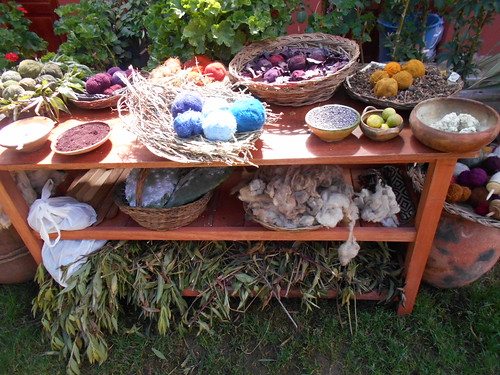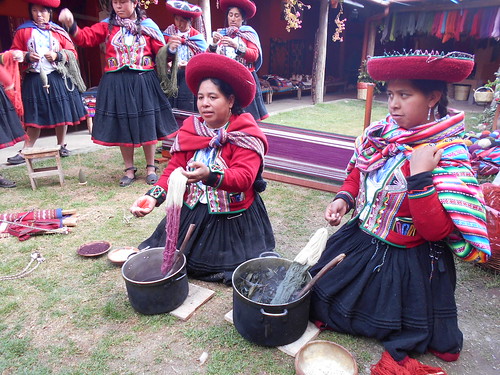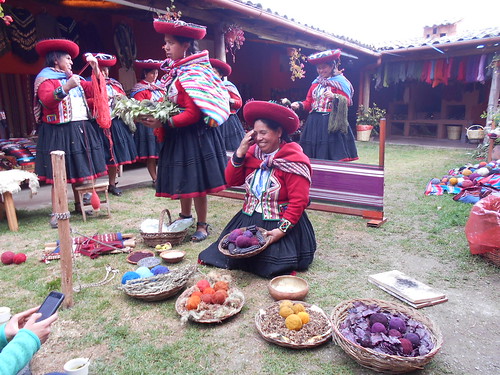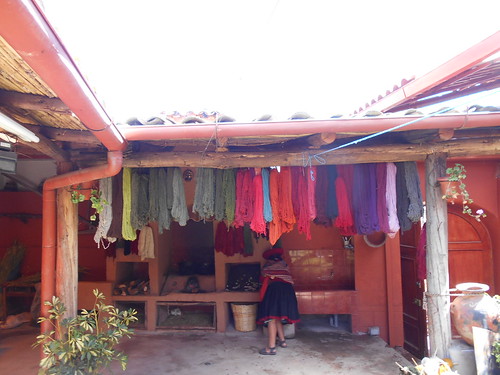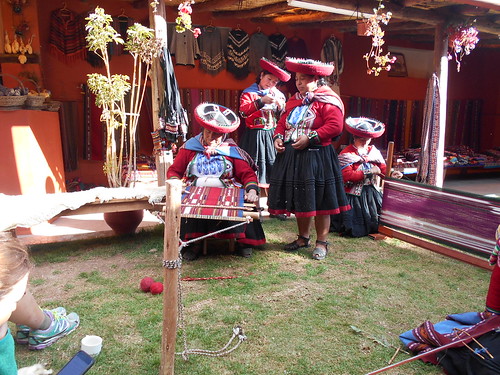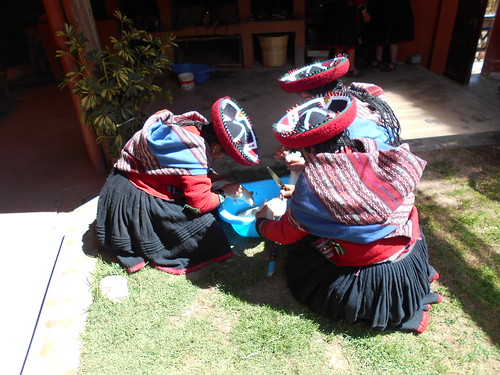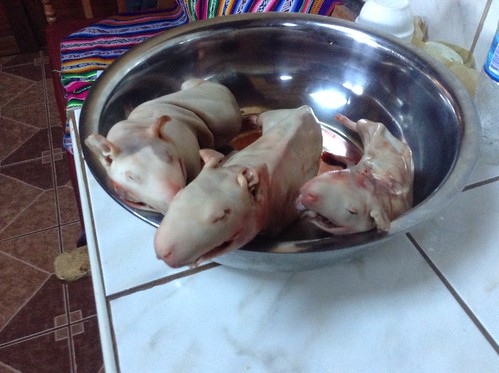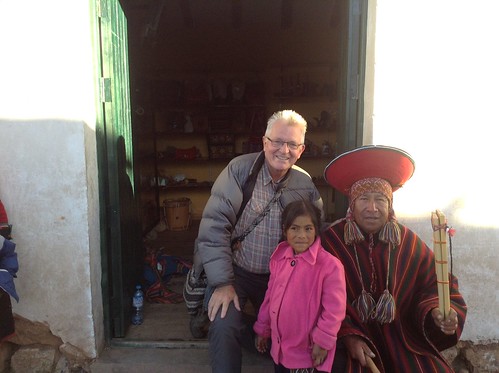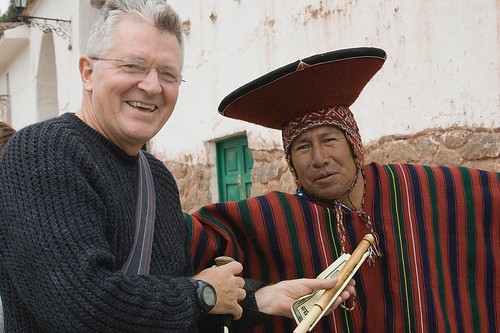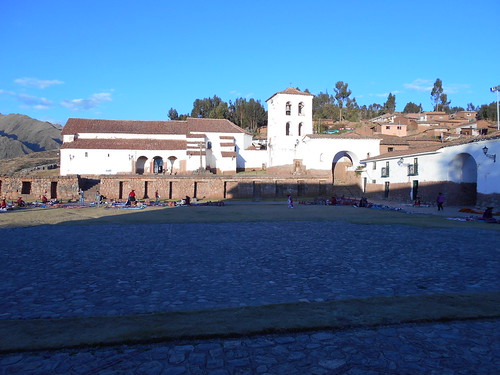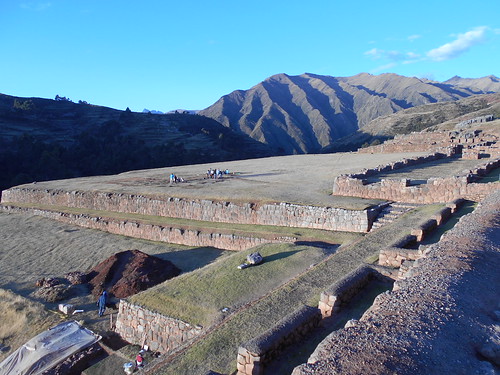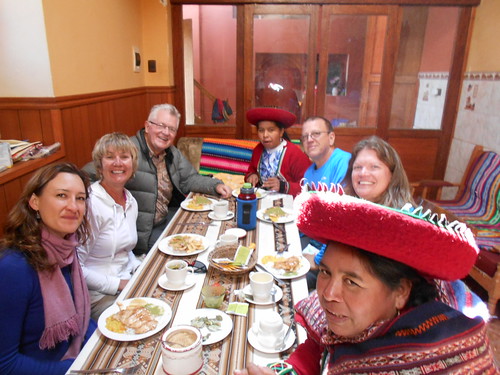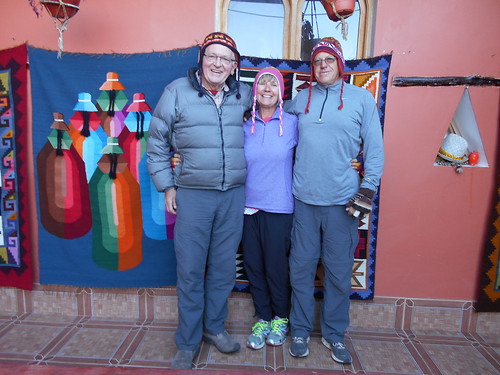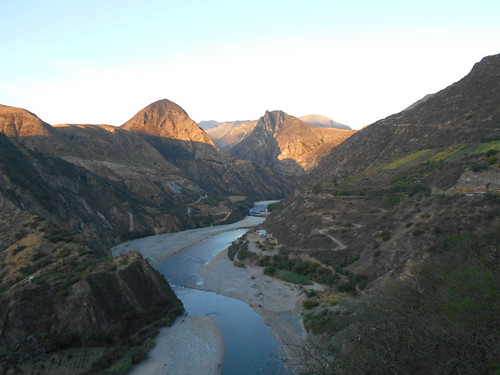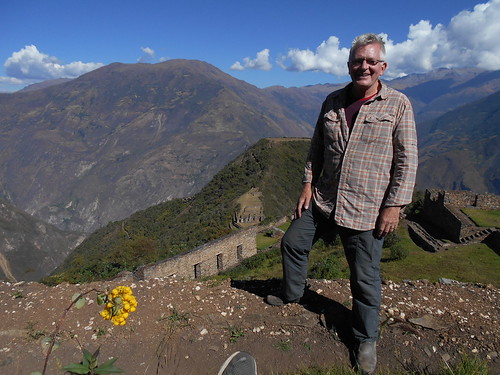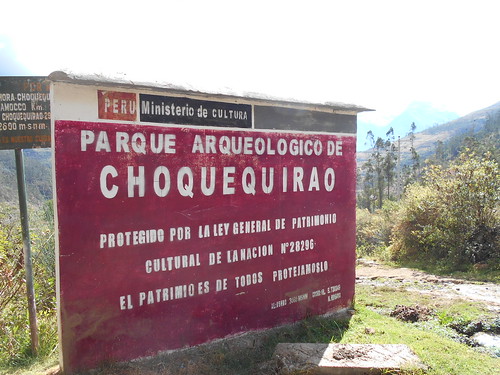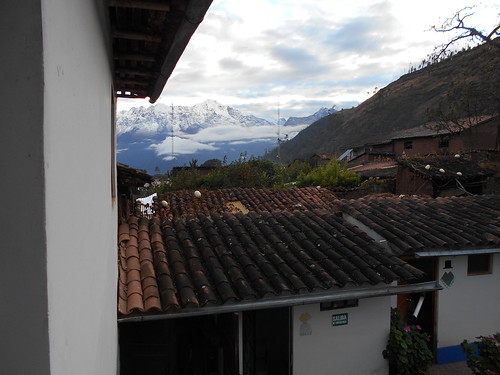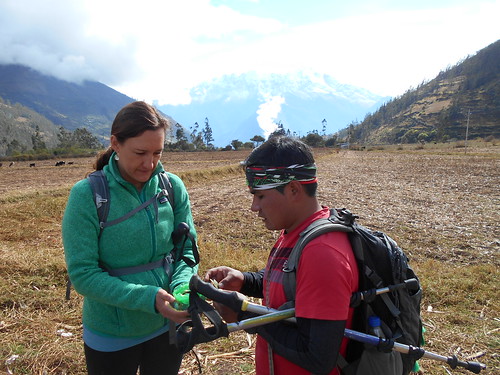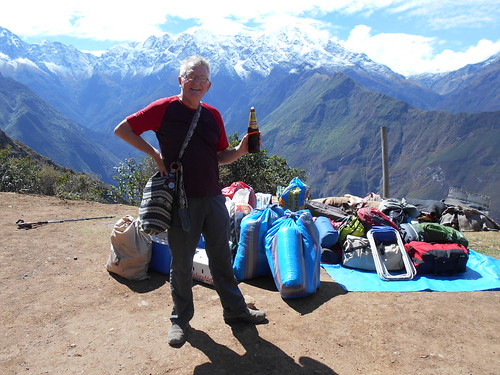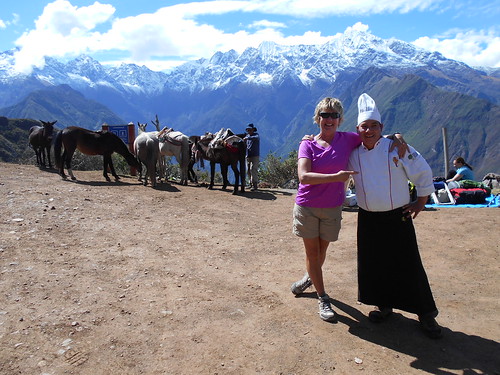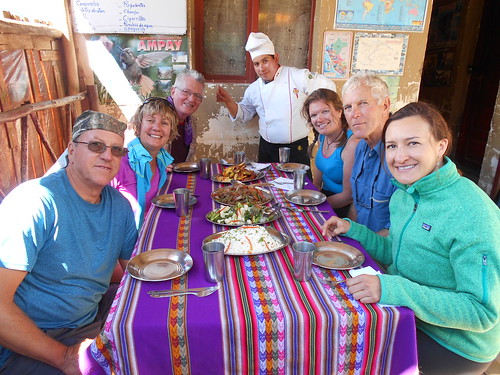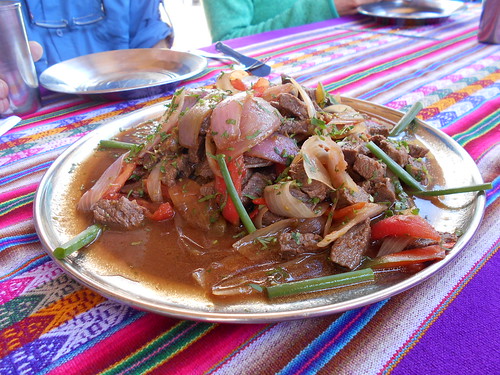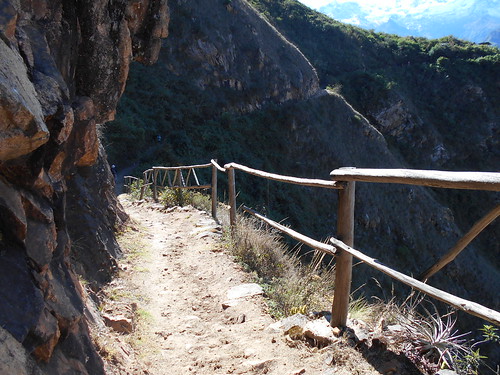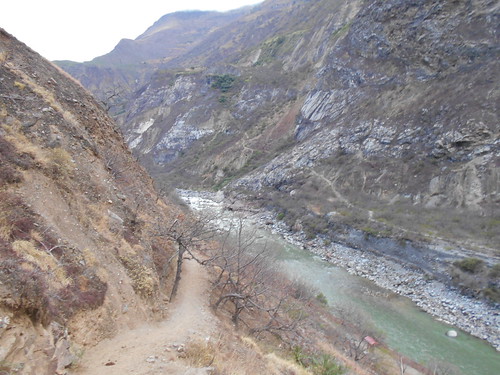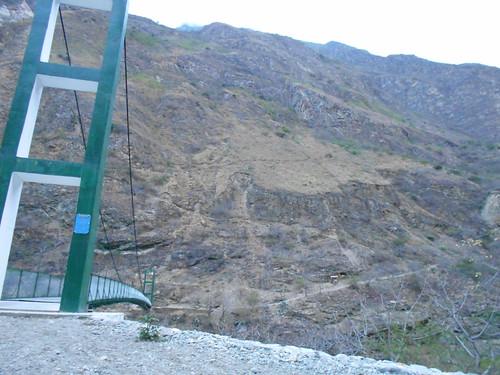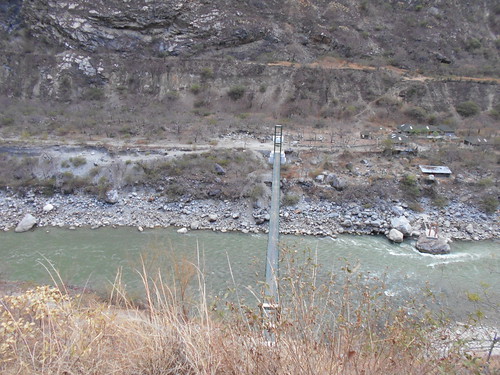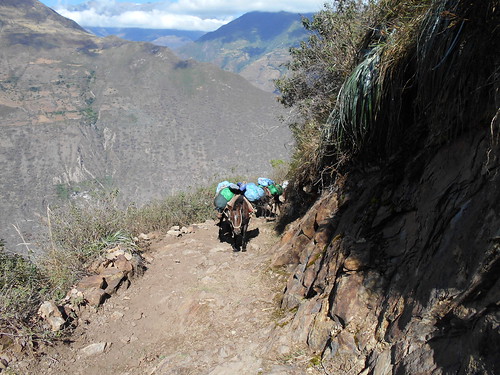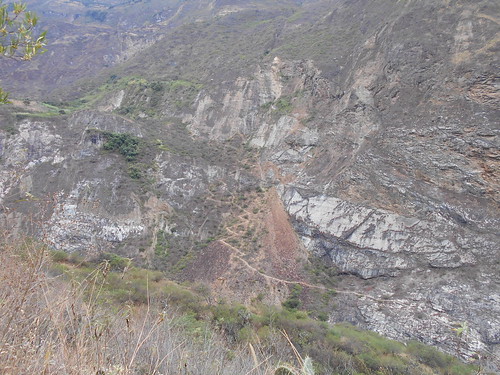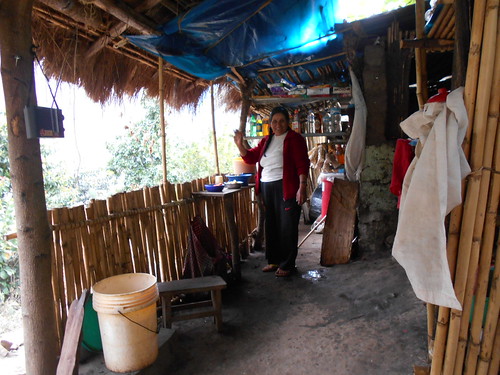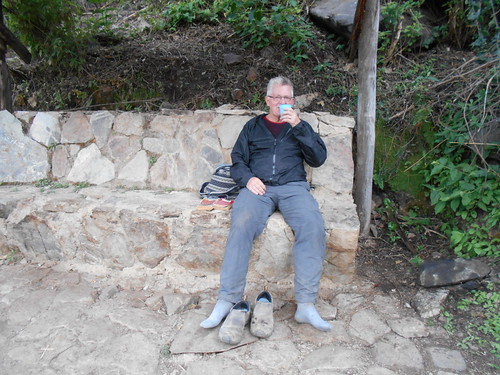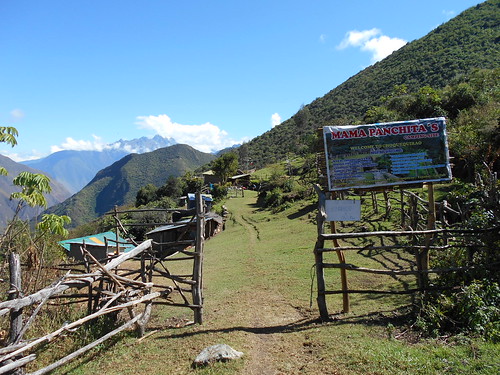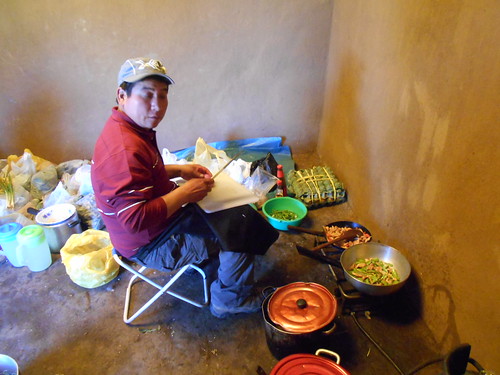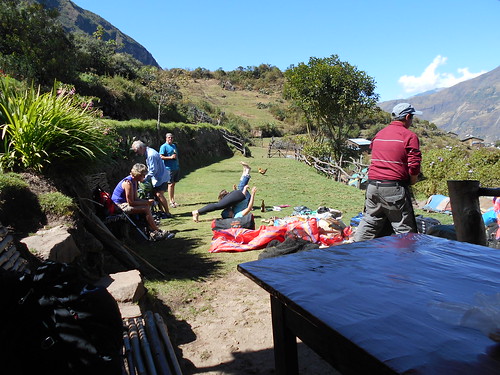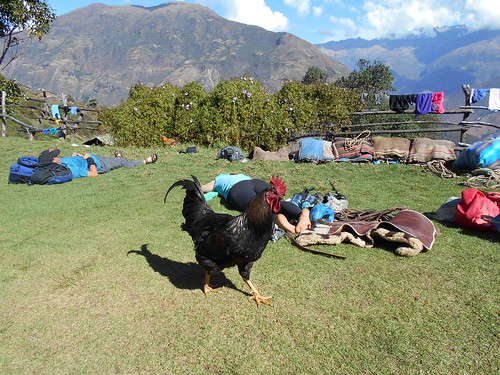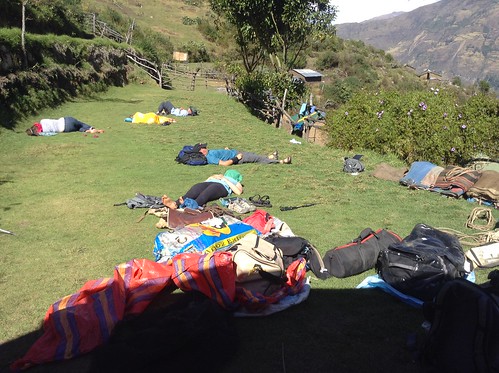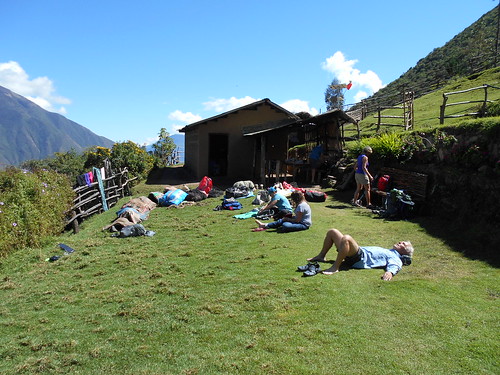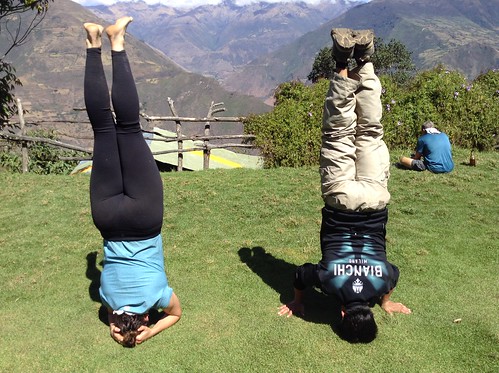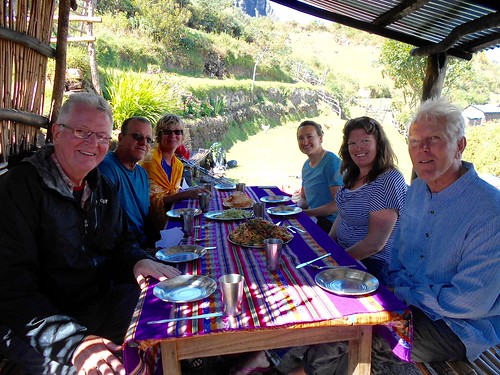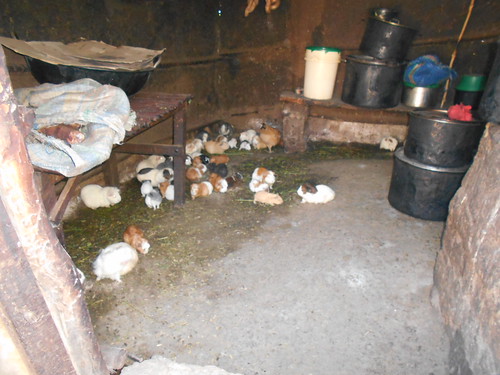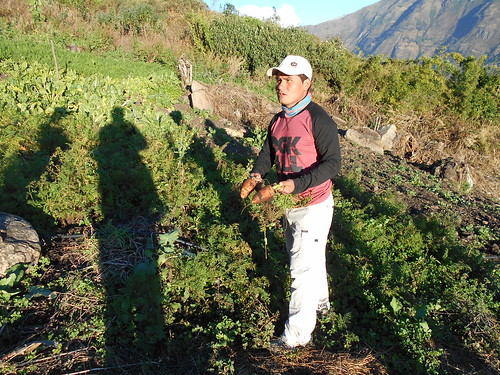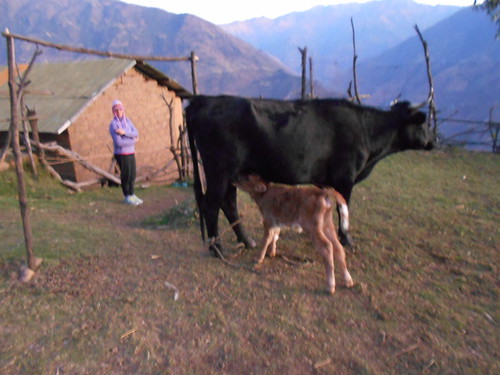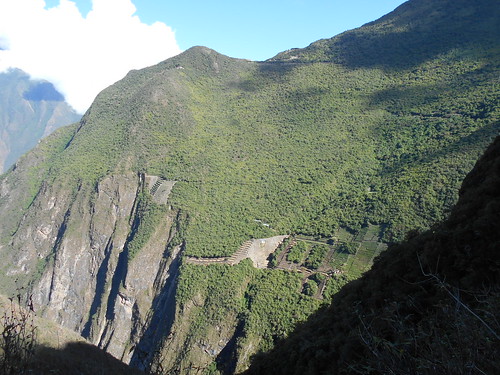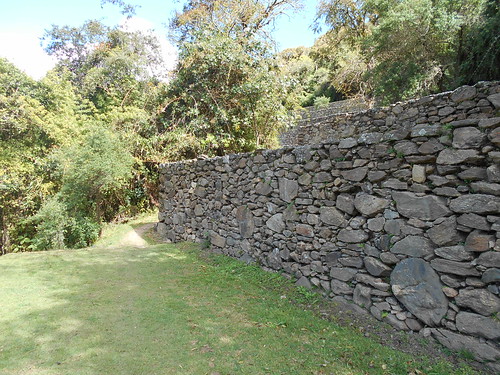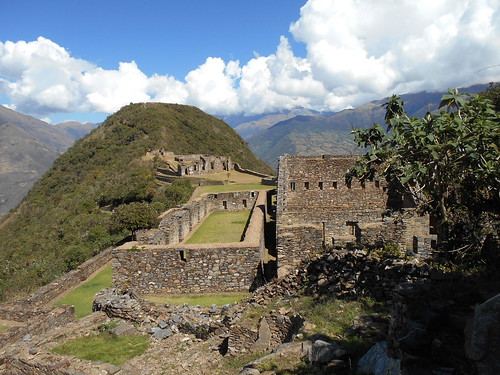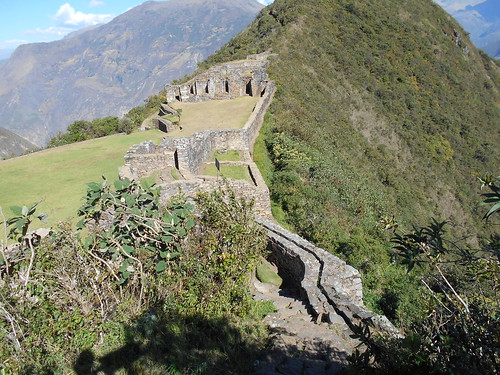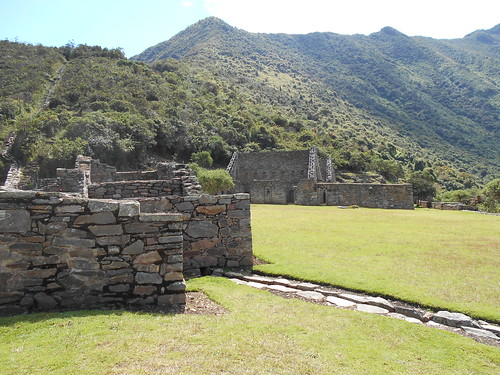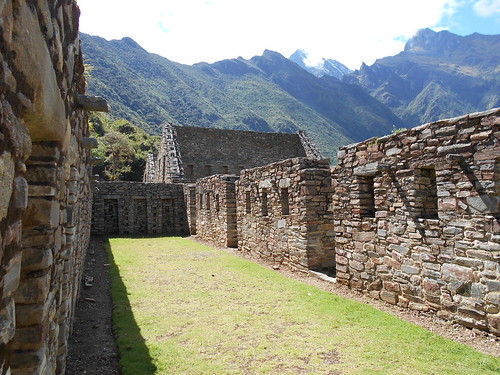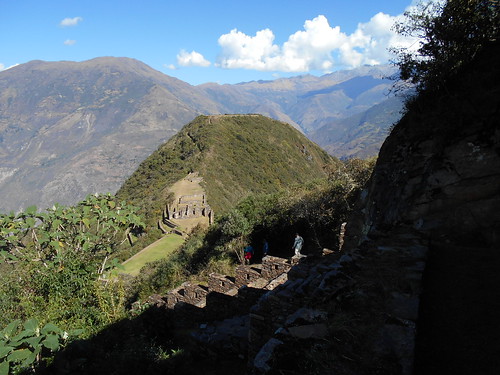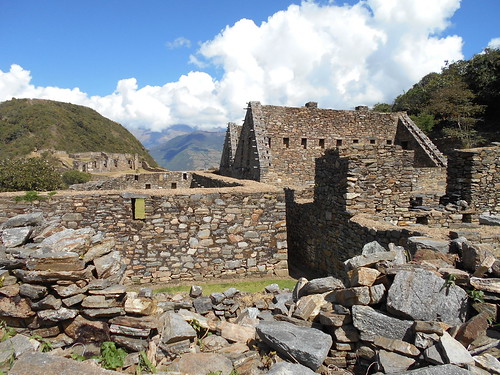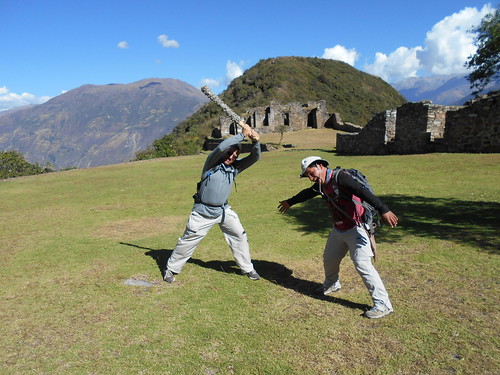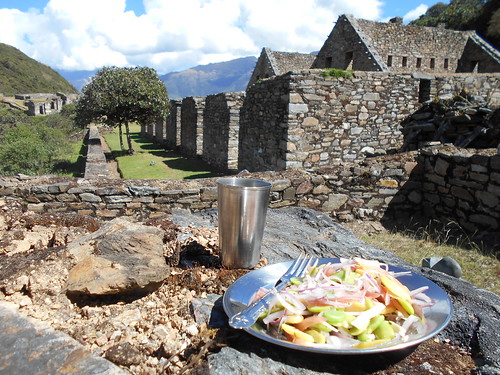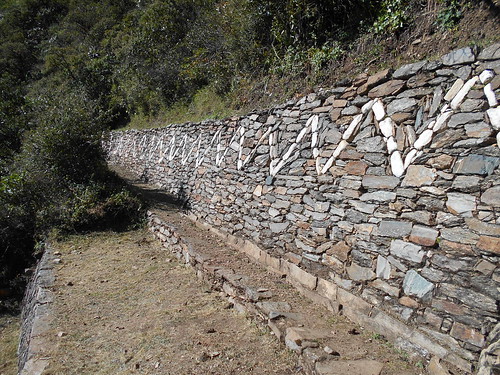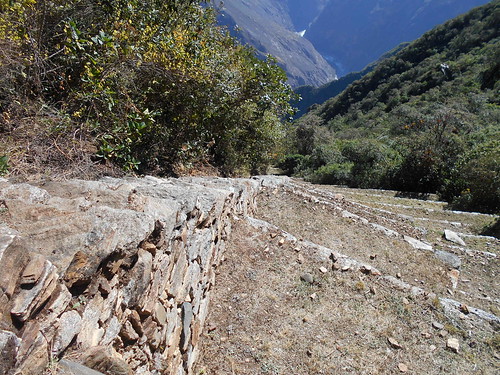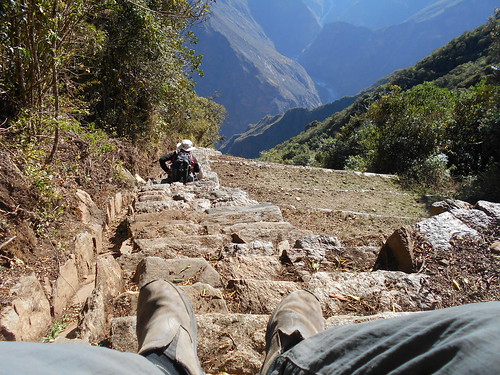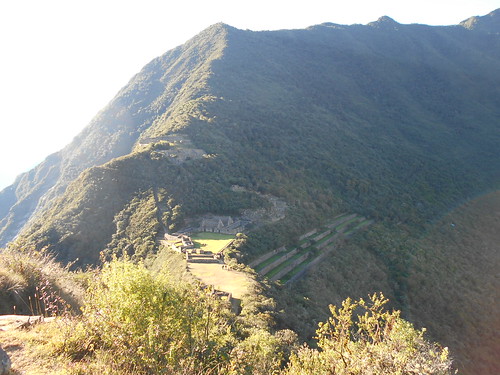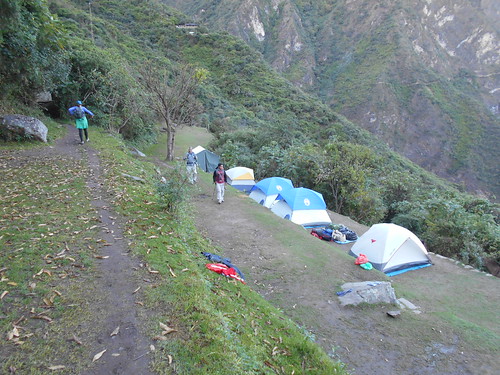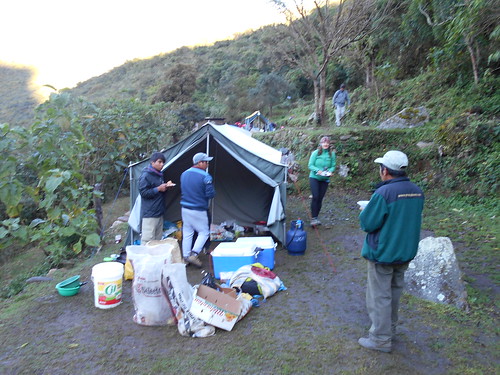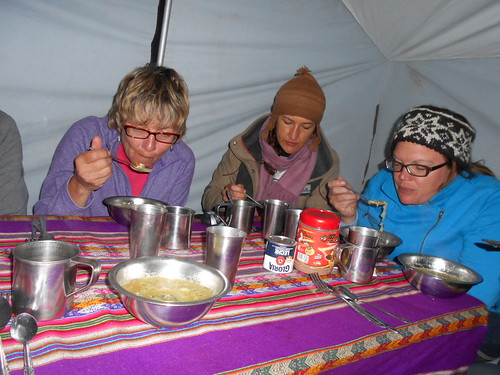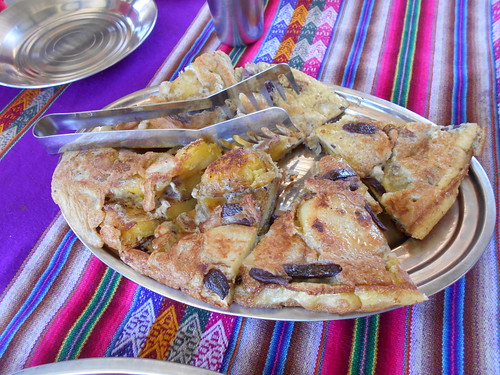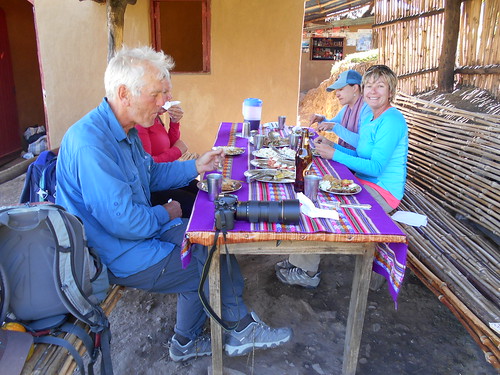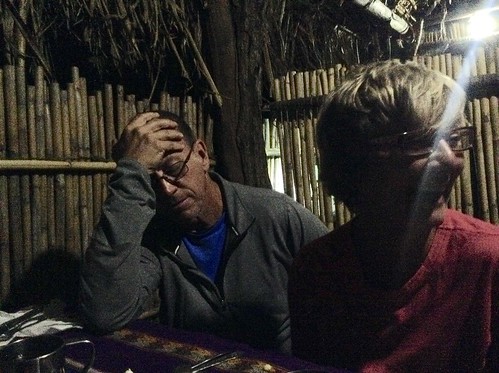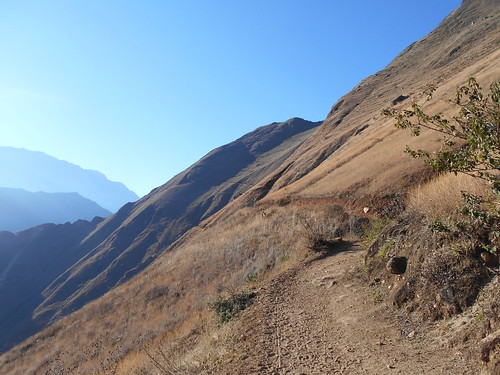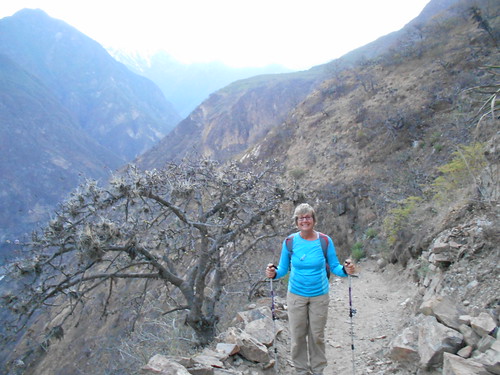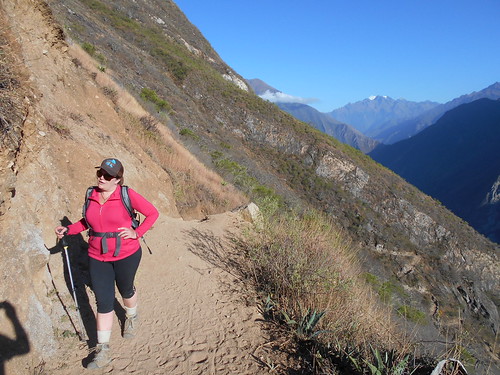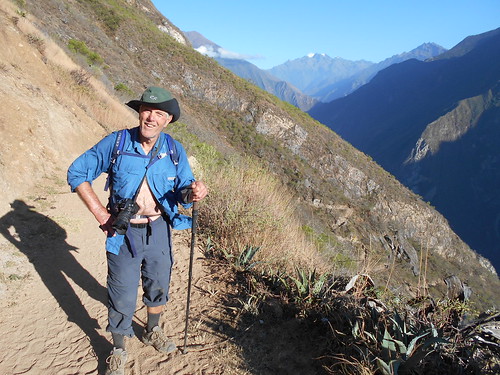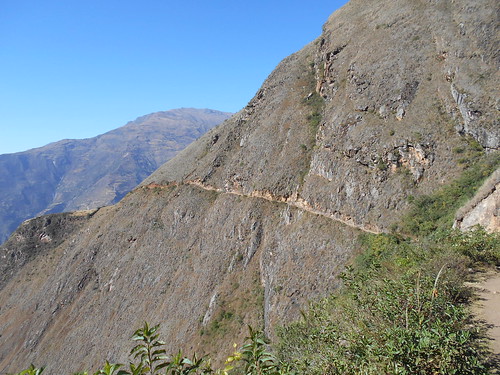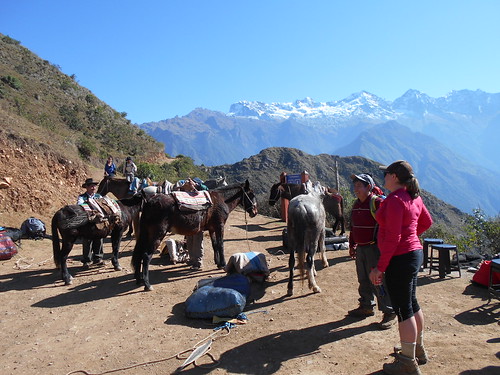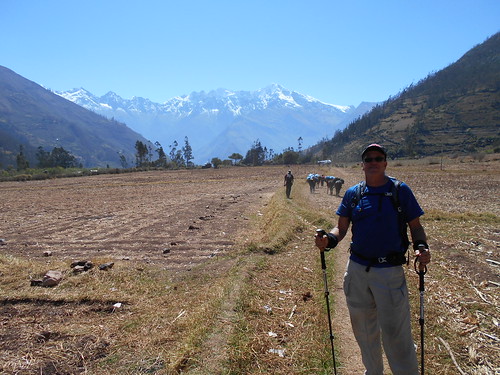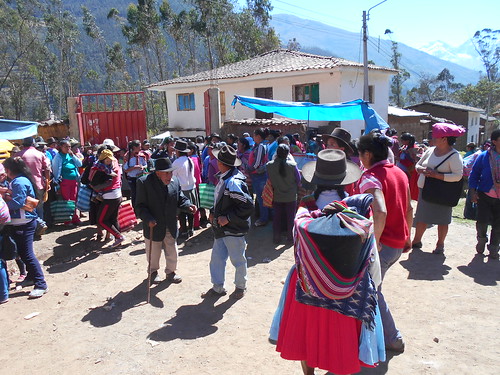I was looking forward to returning to Chinchero since I was last here in 2005 before they had finished the Minka Hostel. I had brought with me the photographs I had taken then of the people working at the weavers cooperative.
I was especially interested in seeing the two children on just a year old at the time and the other 4 years old. Vilma and her daughter, Rebecca are telling Heidi and Alexis about some of the people in the pictures I brought.
This is Evelyn who was just a one year old baby strapped to her mothers back in 2005 and now look how beautiful and friendly she now is. The 14-year-old will arrive here after I leave and I am hoping that Gary can get a similar picture of her holding her 10-year-old portrait.
Vilma and her coop partners gave us a demonstration of how they prepare the finished products beginning with how they clean the dirty wool with a natural root product shredded in water. The table below shows some of the natural ingredients they use in making all of the natural colors you see in woven products.
On the left Vilma is showing how the conchinella bugs found on cactus can make a reddish-purple dye. These bugs which look like little pill bugs are dried and then added to the hot water. To turn this reddish-purple dye into an orange color, they add salt to the mixture. On the right, Rebecca is dying the wool green by putting certain green leaves into the hot water. Different hues are achieved by increasing the concentration of the dye material and lengthen the time of dying in the hot water.
Vilma is demonstrating the different natural materials that create the different colors of the wool which is either from sheep, lambs, or alpacas. They use no artificial dyes or yarns to make their beautiful products. Ten years ago, I bought a 5' by 18" green patterned table runner that fits in well at our home in Loreto, MX.
Vilma is applying some conchinilla "lipstick" to Malu. At first, it was a brilliant red and then it turned black---yikes! Instead of using the dried conchinilla bug, Vilma just squashed a live bug in her hand and then applied the "lipstick". I don't think Malu will be able to get these live bugs past Agriculture Inspection when she returns to NYC.
Some of the colorful dyed yarns are drying out.
The women each take about three hours at a time to work on this table runner. They do not have any of the pattern schemes written down, but rather it is all in their head. Since childhood, they have been doing this and Vilma said that a three-hour stint at weaving these patterns is about as long as they can do before mistakes occur.
This Chinchero Cooperative is a very popular visiting spot for large tour groups and we heard their spiel while we were in the backroom area. Lots of humor and jokes about their work. One I remember is that when they showed a pointed bone about 6 inches long they use to tighten the weave, Vilma remarked that " This bone is from a tourist who did not buy any of our woven products."
In the picture below, the women have killed the cuy---guinea pigs--and they have put them in boiling water so they could easily scrape the fur off before gutting and cooking them. As a part of the group tours, they offer the visitors a sample of the cuy and some small boiled potatoes.
I found this bowl of cuy as I went to the refrigerator to get some milk for my coffee. A bit of a surprise. These are either for the tour groups or for tomorrow night's dinner here.
After the weaving demonstration, I went over to the plaza, church and Inca ruins to see if the flute seller I had met 10 years ago was still there. After showing some of the vendors his picture, I was led to Jesus along with his family. Last time I was here, you can see I bought a reed flute and instruction book from him, and this time I bought an alpaca bone flute with a puma etched into it. He offered 80 soles and I countered with 40 and we settled on 50 soles. He wanted me to return in a couple of years and wanted me to bring a down jacket with me like I was wearing. I said perhaps we shall meet again.
The following day Gary and Heidi met up with him and bought a couple of flutes as well.
We were younger back in 2005, and I still can't play the flute.
Here is a view of the courtyard and the church beyond.
Here are the Inca ruins that they are currently excavating.
Here we are having a standard chicken, rice, potato dinner. However, the cilantro sauce livened up the chicken. That is a good sauce to make in the future. Vilma and her daughter, Rebecca, are eating with us.
Steve returned to Lima before we got here to join up with his family. He was beginning to get homesick to see his wife who is doing Spanish immersion to help her as a college professor back in the SF bay area, his two boys are in local Catholic schools doing their own immersion and in their spare time they go out surfing with Steve.
Faustina is Vilma's mother and I am holding the picture I took of her 10 years ago. These three generations of women seemed to laugh and be happy all of the time we were with them.
Well, I did not want to end up as a weave tightening bone for Vilma, so I bought some beautiful things from her for my family back home. Some alpaca wraps with the one for Tani made from the natural wool colors of the alpaca--white, brown, and black. I got woven hats for the others that are hand made with natural dyes.
Gary and Heidi and Malu are continuing on the explore more of the Sacred Valley and then head to Machu Picchu for the final days of their Crooked Trails adventures with me. I really enjoyed their company on this unique adventure which was something they had not experienced before in their many travels. We got to know each other better and are pleased with how we did on this most strenuous adventure. Here is our farewell photo with the Inca calendar wall hanging behind us.
Subscribe to my YouTube Channel
I have recently uploaded all of my travel videos to YouTube now that they allow longer uploads. I have also added other shorter travel videos.
That link is https://www.youtube.com/c/huntforgold
If you do go there, please subscribe to my video channel since it will help me eventually get some income there and help with my future travels.
